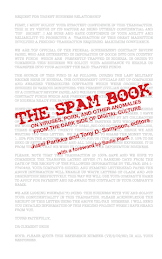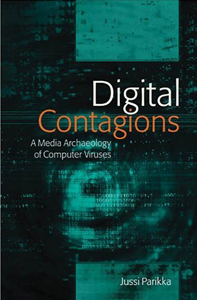Shanken's book is part of Phaidon's Themes and Movement-series, so it is less a study than an archive. Even though it fits into the wider field of "media art histories", its less a history in the sense of offering a unified narrative than an archive. Perhaps this is actually not only a function of the book series, but the topic itself; the whole theme of "electronic media and art" is way too heterogeneous and open than something that could be tied to a narrative format, and hence is by its nature something that calls for an "archival" approach. And for Shanken, its not only a book on the art pieces or objects but also points towards the various practices and histories of engagement with technical media -- and hence, interestingly, points towards histories of modernity, and the proximities of art-science-technology that brand the media archaeology of digital culture.
Shanken offers a good introduction to the topic in a fashion that opens up to non-experts. He reflects on categorisations offered as well as on some of the principles of what qualifies as electronic art. Indeed, his key point is to extend towards the media technological conditionings of such pieces introduced in the book, but to the continuity of genres and themes across media. I had my doubts about the approach, as I believe one of the crucial functions of media arts is exactly to carve out and probe for the singularities of the media in which they function. This is where the media archaeological approach becomes relevant as well; not only offering historical narratives, but being able to point towards the inscription surfaces on which media is carved. (Well, that did not sound too original after Foucault.)
Yet, Shanken's approach is quite often good. The section on "Motion, Duration, Illum

ination" is an intuitive one that moves through Frank Malina's Systeme Lumidyne
(1956) to for example Paul DeMarinis' media archaeological Edison Effect (1989.) (Pictured).
In addition to visual culture, the sonic is strongly present also in such sections as Charged Environment (e.g. John Cage and Toshio Iwai) and in Networks, Surveillance, Culture Jamming (with Paul D. Miller's Errata Erratum 2002). On the other hand, a section entitled Simulations and Simulacra is a bit too predictable.
Talking nowadays about media arts, you are bound to encounter the theme of embodiment. This is present for example in the section Bodies, Surrogates, Emergent Systems. This and other sections show how much electronic media art has contributed in conceptualising new materialities and embodiments. Of course, in the midst of cyberculture enthusiasm various A-life and other simulation systems got a lot of attention, but Shanken is able to point towards other kinds of catalysations which produce the familiar bodies into anomalous, new, surprising. Here, the human body itself can become a medium. David Rokeby's Very Nervous System (1986-2000) turns the human body in its movement into sounds. Antúnez Roca's Epizoo (1994) opens up the human body susceptible to external control, even pain, in a similar fashion as Stelarc's Ping Body from 1994. Breath (1994, pictured below) by Ulrike Gabriel is a mesmerizing piece that tunes breathing through a computer algorithm into a polygone representation. Breathing becomes visual, topological, inhabits space in a new way that's not to my liking so much representation but environmental and hence rewires back into the neural system of the breather -- this piece is much more interesting than any simple cybernetic idea, and points towards the crucial field of what is beyond control and non-cognitive in embodiment. (A theme that Nigel Thrift has written interesting things about.)
Electronic media art is able to articulate and summon forces invisible. Breath is a good example, but as much works articulating e.g. forces of capitalism are present in the work. My favorites here include Gary Hill's Soundings that articulates the different materiality of perception of sound and Nancy Paterson's Stock Market Skirt (1998) that does not neglect the gendered dimensions of the forces of capitalism.
A very good addition to the book is the extensive compilation of key texts of the field. This includes various texts by pioneers from Nam June Paik to Roy Ascott. Whereas the field of "mediaarthistories" has been actively organizing the past years, such works are excellent in opening up it to the wider academic and art field. Shanken does a good job; more in my Finnish review! In a more tone more directly aimed at the academic audience, I am now occupying myself with Sven Spieker's The Big Archive that focuses not only on the appropriation of the "greyness of the archive" in European modernist avant-garde, but actually also in the whole "archivality" of modernity. A good read, so far.









And thx also for this, which i have ordered
ReplyDeleteits a good resource book -- takes up half of your bookshelf due to its size, but its worth it!
ReplyDeleteThanks for your interest in Art and Electronic Media and for uploading this English excerpt of your Finnish review. I'm glad you got so much out of the book and would love to have a copy of the full review when it comes out... Best, Ed Shanken
ReplyDelete